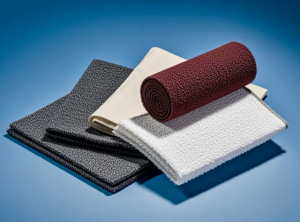Home » Cloth Abrasive-The Revolution in Mechanical Polishing

There was never before, a technology in the textile industry, that could polish all types of fabric quickly and effectively, as compared to cloth abrasive. Cloth Abrasive is a great technology because it made the lives of textile engineers pretty easy and comfortable. The revolution in mechanical polishing came in the 1980s, with the introduction of Cloth Abrasives in the Industry.
In today’s world, there are many different types of cloth abrasives. From the days when sandpaper was first invented, it has evolved into a versatile tool that is used in many industries across the globe. This article will discuss how this invention has changed and what its uses are today.
Sandpaper was first invented by Thomas Wedgewood in 1780. He made his sandpaper out of chopped glass bits that he glued together on woodblocks. This invention was very popular for its time because it made smoothing wood easier than ever before. However, this type of sandpaper was not easy to use and had many limitations that kept it from being widely adopted by carpenters and other workers who needed a way to smooth surfaces without spending hours doing so with their hands alone.
Nearly 200 years after the invention of sandpaper came another major development: cloth abrasives were created by using woven fibers instead! This meant that these new materials could be cut into any shape desired, making them more versatile than ever before.
 Cloth abrasive is a type of cloth that has abrasive particles embedded within it. These particles are often made from silicon carbide, aluminum oxide, or garnet. The cloth can be used to remove paint, rust, and other contaminants from surfaces.
Cloth abrasive is a type of cloth that has abrasive particles embedded within it. These particles are often made from silicon carbide, aluminum oxide, or garnet. The cloth can be used to remove paint, rust, and other contaminants from surfaces.
There are several different types of cloth abrasive, but they all work by using friction to remove material from the surface being cleaned. The amount of pressure needed to use a cloth abrasive depends on the type of surface being cleaned and whether or not the surface is porous or not.
1. Cloth Abrasive Material: First of all, make sure that the cloth abrasive is made of a material that’s right for your needs. Some are made of polyester or nylon and can be washed in the washing machine; others are made of cotton or other fabric and must be dry-cleaned.
2. Durability: The durability of cloth abrasives depends on the type of materials they are made from. For example, leather is a durable material that can be used to make cloth abrasives that will last longer than synthetic materials.
3. Cleanliness: Cloth abrasives are easy to clean by simply wiping them down with a damp cloth after each use so that germs do not build upon them over time If you touch your skin too often while working with these materials, it could cause disease.
4. Cost: The cost of cloth abrasives depends on their size and the materials used to make them. For example, leather is more expensive than synthetic materials such as plastic or rubber because it is more durable and difficult to produce. However, some people prefer using cloth abrasives made from leather because they feel they are more comfortable when working with them than those made from synthetic materials like plastic or rubber.
5. Size: The size of the cloth is important because it determines how easy it will be for you to work with the cloth. If the abrasive cloth is too big, it’ll wrap around your polisher too much.
Here are some of the many uses of cloth abrasives:
1. Removing rust and corrosion from metal surfaces.
2. Polishing metal, plastic, and other hard surfaces.
3. Sanding and feathering paint edges, body filler, and fiberglass.
4. General cleaning and finishing work.
